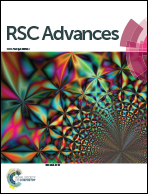Gas-phase synthesis of 3-carboethoxy-quinolin-4-ones. A comprehensive computational mechanistic study to uncover the dark side of the Gould–Jacobs reaction†
Abstract
A set of 3-carboethoxy-quinolin-4-ones has been synthesized from diethyl 2-((arylamino)methylene) malonates through a Gould–Jacobs (G–J) cyclization using the flash vacuum pyrolysis (FVP) method. Mechanistic studies including calculations at first principles DFT and Coupled Cluster (CCSD(T)) levels of theory, along with insightful experiments, have been gathered to shed light on the complex multi-step process to afford quinolones. The G–J cyclization proceeded through a unimolecular process involving reactive species as iminoketenes, an azetinone and a quinolin-4(4aH)-one intermediates. The reaction was rate limited by a proton shift step in the pathway which leads to the final tautomeric product. In the gas phase pyrolysis of the starting malonates, along with the expected 3-carboethoxy-quinolin-4-ones, 3-unsubstituted-quinolin-4-ones were obtained, and the ratio between these products was strongly dependent on the nature of the arylamino group. In order to explain the deethoxycarbonylation reaction, DFT and ab initio calculations were also accomplished.


 Please wait while we load your content...
Please wait while we load your content...